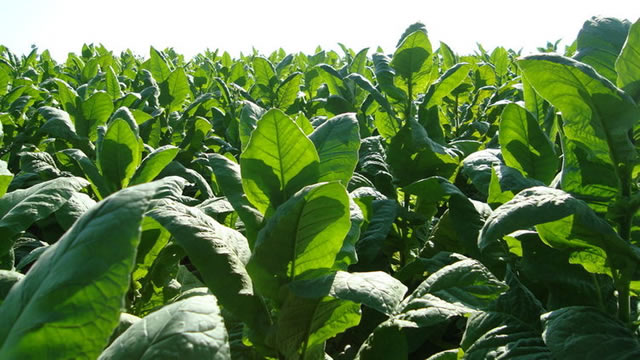Tobacco farming: Land reform success story


Tobacco farming has made significant progress since Independence. The land reform enabled black farmers to produce the crop at a commercial level
Business Reporter
The revolutionary socio-economic transformation that is occurring in tobacco growing communities points to one of the outstanding success stories of the land reform.Until 2000 tobacco farming was dominated by a few white large scale commercial farmers who accounted for the bulk of the production.
According to Food and Agricultural Organisation, there were only 2 000 commercial tobacco growers prior to the land reform programme who accounted for 87 percent of the planted hectarage.
They also accounted for about 95 percent of the total output, equal to between 190 million kilogrammes and 230 million kilogrammes of flue-cured tobacco annually.
Such state of affairs meant wealth generated from tobacco production only found its way into the hands of few large scale farmers.
The sector has, however, evolved since 2000 with close to 90 000 mostly indigenous farmers now dominating tobacco growing.
While the transition had its challenges such as successive droughts and funding, production has steadily risen and last year, production surpassed the record 210 million kg for the first time in 14 years.
“It has not been easy since we were given the land,” said Mrs Tilda Mora who farms in Rusape. We lacked expertise and we had no money to invest in the fields. But it is now clear for everyone to see how tobacco growing has positively impacted on Zimbabweans. I think this is the best the Government has done for the people.”
Widespread participation of indigenous farmers in tobacco growing was unimaginable prior to the redistribution of productive land among the black majority.
This was because of the skewed colonial land ownership system inherited after independence where land holding in the large scale commercial sector was very expansive.
Prior to the Government’s overly successful land reform programme it was estimated that about 4 500 farmers occupied 21 percent of Zimbabwe’s total land area of about 8,2 million hectares, including 3,7 million hectares in natural region II.
According to FAO, less than 20 percent of all large scale commercial farms were smaller than 200ha while half were greater than 1 000ha, and owned by a few hundred whites.
Large-scale commercial farmers dominated tobacco production characterised by use of modern machinery, overhead and drip-line irrigation and permanent wage labour.
This, however, remains a pipe dream for most new indigenous farmers who battle each year out to secure resources, machinery and equipment needed to optimise production.
FAO said this was because most (white) commercial tobacco farmers had diverse sources of income. Although tobacco was the backbone of commercial agriculture, other important commercial crops included wheat, soybean, maize, groundnut and livestock, which were typically grown in rotation with the golden leaf.
The former large scale commercial farmers were also strongly supported by financial institutions, a phenomenon still evolving for indigenous growers who have to battle the odds to obtain bank loans due to issues relating to lack of collateral.
Notwithstanding the challenges around access to affordable funding, indigenous tobacco growers have more than demonstrated their capacity to match large scale commercial farmers in terms of both quality and quantity of the tobacco crop.
Government’s policy on land, especially as it relates to the impact on tobacco production, has resulted in redistribution of wealth generated from within the country, which is now also shared among the previously disadvantaged communities.
The social and economic impact, as a result, is beyond measure. It has brought with it better access to education, health, food, accommodation and social well being while the marginalised now also actively participate in the mainstream economy.
“We have witnessed the real spread of wealth as more black farmers are now growing tobacco,” economic analyst and farmer Mr Jonathan Kadzura said.
“This position has created wealth in farming and rural communities and what is now important is to have proper systems to deal with price fixing to ensure farmers derive maximum benefits.”
While the positive transformation in tobacco production over the years is undoubtedly laudable, it however goes without saying that a lot still needs to be done to provide funding support to growers and reduce the reliance on contract funding.
Easy access to credit for tobacco farmers would ensure a modicum of freedom to influence prices, which is very limited under the contract system where the contracted crop belongs to the financier even before it reaches the auction centres.
Given Zimbabwe’s competitive advantage in tobacco growing, besides the benefit to individual farmers, the crop has potential to play a significant role in improving liquidity in the economy at a time virtually all of it comes in the form of foreign currencies.











Comments